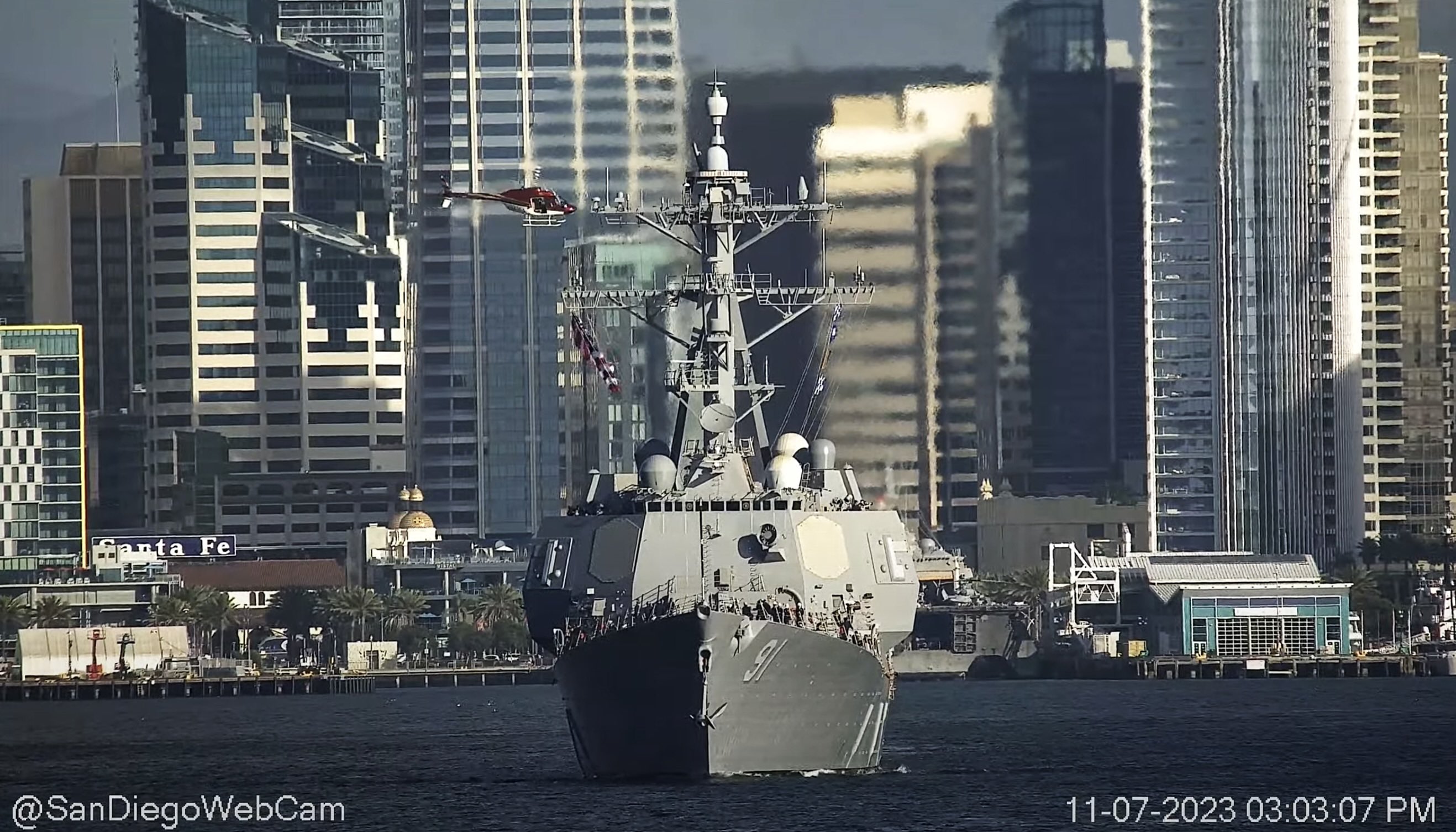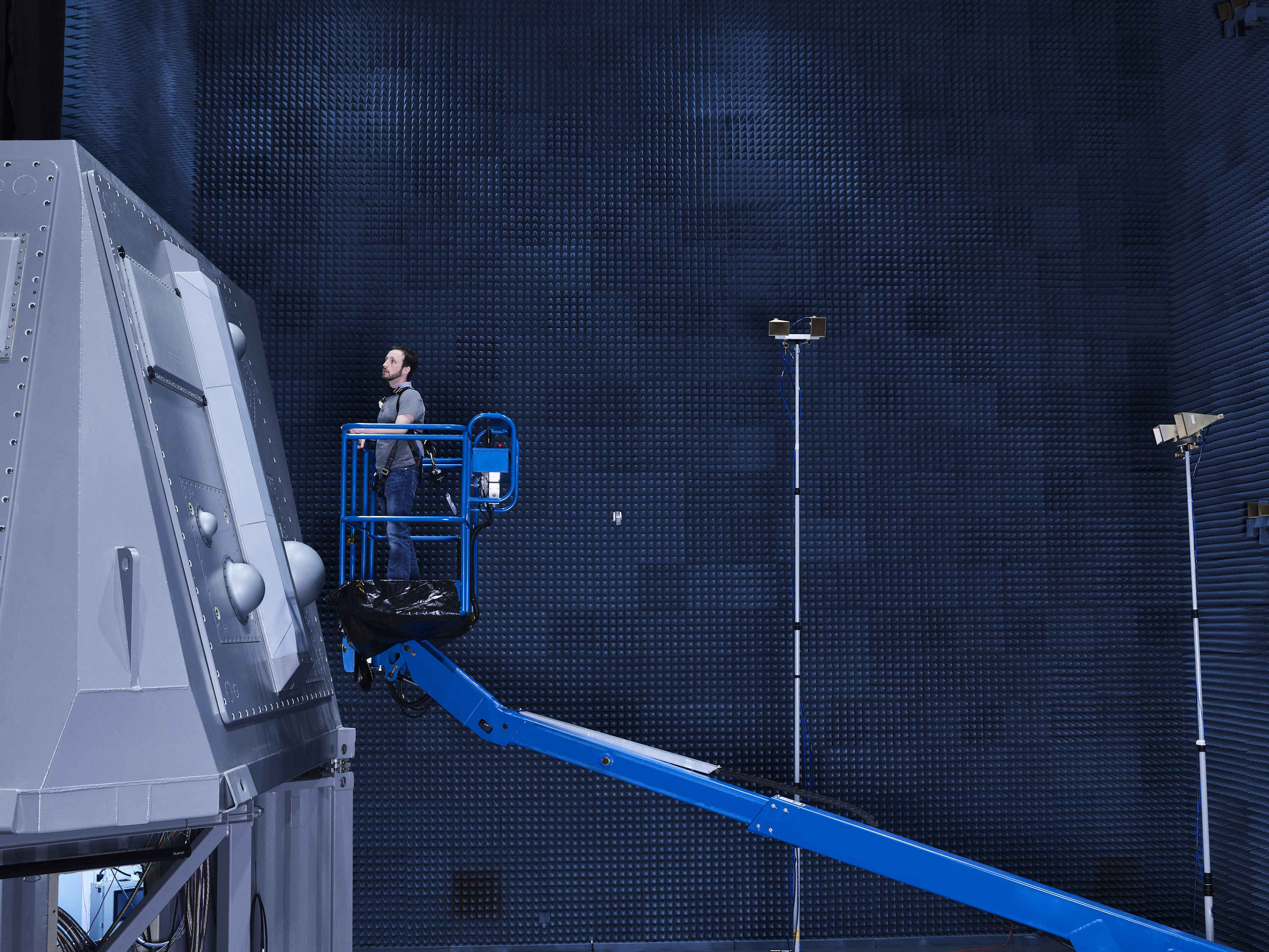
ARLINGTON, Va. – A quartet of destroyers will be the test case for the Navy’s $17 billion plan to add a major electronic warfare upgrade to Flight IIA destroyers, service officials outlined last week.
Late last year, USS Pinckney (DDG-91) wrapped up the first part of a two-step modernization availability and left General Dynamics’ NASSCO shipyard in San Diego, Calif., for sea-trails with what some in the service have compared to Carrie Fisher’s double bun hairstyle in Star Wars.
Standing two decks high, the sponsons were added to the superstructure of Pinckney during a $121 million maintenance availability that also upgraded the ship’s combat system and included a hull, mechanical and engineering refresh. The addition contains the Northrop Grumman-built AN/SLQ-32(V)7 Surface Electronic Warfare Improvement Program Block III, or SEWIP Block III.
Pinckney now will return to the fleet to test the major upgrade to this ship’s electronic warfare capabilities, DDG 2.0 modernization program manager Capt. Tim Moore said last week at the annual Surface Naval Association symposium.
The guided-missile destroyer is the first of four ships that will get the radical alterations to the deck house. USS James E. Williams (DDG-95) in Norfolk, Va., and San Diego-based USS Chung Hoon (DDG-93) and USS Halsey (DDG-97) are the next in line.
“We’re taking four ships, we’re incorporating the legacy modernization efforts the HM&E combat system. We’re also putting the first big piece of modernization on those ships to sea – SEWIP Block III. We will send those ships back out to the fleet. Let them deploy the equipment and then we’ll bring them back in for a second depot maintenance availability,” Moore said.
“After we get through those four ships. We will then bring ships in one by one to do the full modernization availability.”
The second part of the availability will fit the ships with a version of the Raytheon-built AN/SPY-6 air and missile defense radar that will replace the current legacy AN/SPY-1D(v) radar.
The version of SPY-6 slated to be installed aboard Pinckney is a scaled-down version of the radars developmed for the Flight III Arleigh Burkes, Raytheon’s Mike Mills told USNI News last week.
“For the last year and a half, we’ve been really focused on the availability time on how long [Pinckney] will be in the shipyard,” he told USNI News.

While Pinckney sails in the Pacific, Raytheon has already started work on constructing the two-foot by two-foot modular boxes that make up the radars, with an estimated installation for sometime in 2027, Mills said. The SPY-6(v)4 back fit will include 24 of the boxes on each of the four radar faces – smaller than the 37 Raytheon Radar Modular Assemblies that make up the Flight III version. The radar will be able to run off the existing power on the Flight IIA destroyers, Moore said. The size of the Flight III arrays prompted the Navy to do a major redesign of the propulsion and electrical grid aboard the latest version of the Arleigh Burkes.
Moore said the only major addition to the ships to accommodate the radar and SEWIP is extra cooling.
The upgrades for the four ships build on the existing DDG modernization program that upgrades all versions of the Arleigh Burkes with the Baseline 9 combat system and more powerful computers that allow the destroyers to both interdict ballistic missile, traditional cruise missiles and aircraft threats.
The DDG Mod 2.0 was initially planned for 20 ships, USNI News reported last year. Moore last week would not say how many ships were targeted for the program, but did confirm that the estimated cost is $17 billion. He said the Navy is “still refining” the total cost.
“We will bring her back in to do that backfit and then as we repeat that on Williams, Chung Hoon, Halsey, we’ll learn those lessons, see how to do it a little bit better. Do it right, and then follow on with the rest of the ships,” Moore said.





